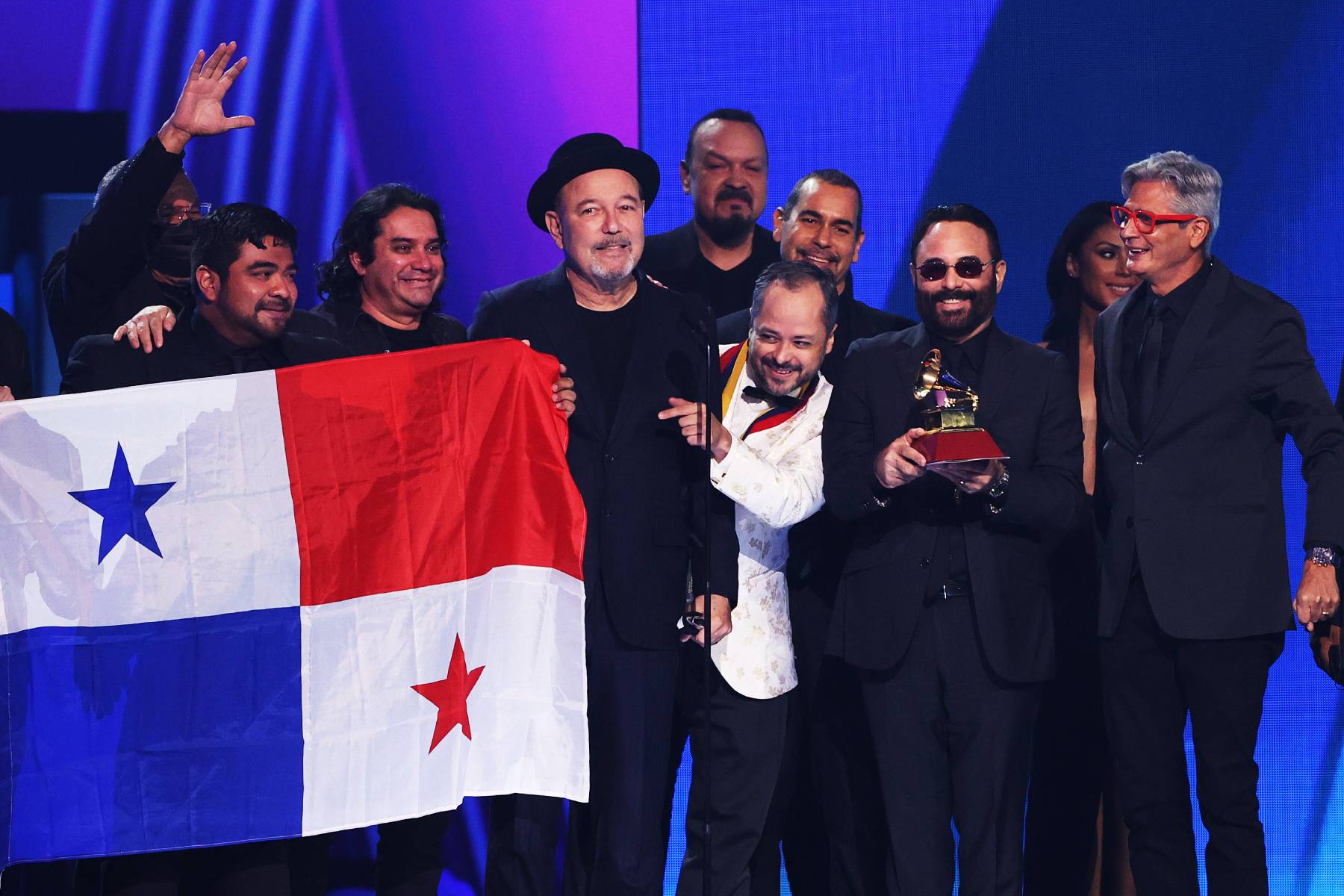
Latin Grammys 2021: ‘Patria Y Vida,’ Camilo, Rubén Blades, and Caetano Veloso Were the Night’s Biggest Winners
Viewed through one lens, last night’s Latin Grammy Awards were full of unexpected awards and upsets. The 79-year-old Brazilian trailblazer Caetano Veloso and 24-year-old son Tom Veloso won over emerging stars like Rauw Alejandro and Camilo for Record of the Year; Panamanian salsero Rubén Blades beat out Bad Bunny, Natalia Lafourcade, and C. Tangana for Album of the Year; and the anthem “Patria Y Vida,” which soundtracked Cuban protests this summer, was chosen as Song of the Year over some of the biggest pop hits in recent months.
But in the context of the awards show’s tastes and traditions, some of these winners might not be all that shocking. Many of the winners are long-time favorites: Veloso and Blades are legends who each boast an impressive history with the Latin Grammys, Blades having won 10 awards and Veloso having won 13 throughout the decade. Yotuel is one of the earliest hip-hop acts recognized by the Academy; he took home Best Rap/Hip-Hop Album with his band Orishas just three years after the Latin Grammys first started in 2000. Each artists is beloved (particularly Blades, who was also honored as Person of the Year), and their wins are something to celebrate, though they do raise the perpetual question of how the Latin Grammys sees the future.
blogherads.adq.push(function () {
blogherads
.defineSlot( ‘medrec’, ‘gpt-dsk-tab-latin-article-inbody1-uid0’ )
.setTargeting( ‘pos’, [“mid”,”mid-article”,”btf”,”in-article1″] )
.setSubAdUnitPath(“music//latin//article//inbody1”)
.addSize([[300,250],[2,2],[3,3]])
;
});
Notably, this year was a return to form after the pandemic led organizers to reimagine the telecast in 2020, choosing to pair satellite performances in different parts of the world with a limited live show. Last night, the event was back at MGM Grand Garden Arena in Las Vegas, and the live format was in full force: There were 18 performances featuring more than 40 artists doing a combination of medleys and tributes that were plenty memorable. Gloria Estefan honored frequently overlooked Brazilian sounds alongside Anitta and Carlinhos Brown; Mon Laferte ripped off a black cloak after belting out “Se Me Va a Quemar El Corazón” to reveal her pregnant midriff; Juan Luis Guerra performed an upbeat yet touching homage to the late merengue pioneer Johnny Ventura; and Mana and Café Tacuba played the late icon Juan Gabriel‘s “No Tengo Dinero.”
But the jam-packed stage, the evening’s gleaming focal point, has always carried an awkward tension. It’s been the Latin Grammys’ way to reflect the modern and commercial impulses of the industry onstage, even when those aren’t especially well represented among its actual nominees and winners. All of the biggest stories in the Spanish-speaking industry right now were covered through the performers. There was an acknowledgment of the massive year Mexican regional music has had through rousing songs from Grupo Firme, Los Dos Carnales, Calibre 50, and Banda Recodo. The up-and-coming rapper Myke Towers showed off his sonic dexterity by enlisting a brass band to highlight the salsa sounds on his track “Pin Pin,” and Bad Bunny — 2020’s most streamed artist of the year — was strategically placed at the very end of the telecast.
Camilo, nominated 10 times and awarded with four trophies, is the one who seems most to embody what the Academy sees as the path ahead. But his sound is heavily indebted to romantic, traditional Latin pop — a subtle sign that the awards’ vision for the future might not be all that forward-looking. Best New Artist went to Juliana Velasquez, who showed off her vocal chops during her award acceptance, perhaps to the chagrin of viewers rooting for the experimental Rita Indiana or the Panamanian star Boza. A new head of the Latin Recording Academy, several category additions, and more artistic submissions than ever haven’t produced results that feel like they’re moving in a radically new direction — but ultimately, that isn’t what the Academy wants. In a recent interview with IndieLand, the Academy CEO Manuel Abud described changes as a gradual “evolution rather than revolution.”
blogherads.adq.push(function () {
blogherads
.defineSlot( ‘medrec’, ‘gpt-dsk-tab-latin-article-inbody2-uid1’ )
.setTargeting( ‘pos’, [“mid”,”mid-article2″,”btf”,”in-article2″,”mid-article”] )
.setSubAdUnitPath(“music//latin//article//inbody2”)
.addSize([[300,250],[300,251],[2,4],[4,2]])
.setLazyLoadMultiplier(2)
;
});
Unfortunately, certain problems do require more forceful change. Though Mon Laferte’s performance and Christina Aguilera’s triumphant return to the Latin Grammy stage were all about female empowerment, this year’s big winners were a male-heavy crowd. And the blatant colorism of the Latin music industry continues to be pervasive; as The New York Times’ Isabelia Herrera pointed out, of the 43 performers included in the telecast, only seven were Black or Afro-Latino. In the category for Best Reggaeton Performance, a genre that Black artists themselves pioneered, the winner was Karol G.
“Patria Y Vida” winning Song of the Year, as well as Best Urban Song, was one instance that felt searing and far more interesting than the anodyne winners of the past. Though there have always been political moments embedded in the Latin Grammys, they’ve often sprung from the artists themselves. In 2017, Mon Laferte bared her breasts, where she’d written “En Chile torturan violan y matan,” aimed at the Chilean government. In 2015, the Mexican rock band Mana and the Mexican norteño group Los Tigres Del Norte directed their song “Somos Más Americanos” (“We Are More American”) at Donald Trump’s racist political campaign, and onstage, they unspooled a giant banner that said, “Latinos Unidos No Voten Por Racistas,” or “Latinos United, Don’t Vote for Racists.” Specific political beliefs aside, honoring “Patria Y Vida” was an undeniable statement — and hopefully, that kind of decisive refusal to play it safe is something we’ll see more of in the coming years.




